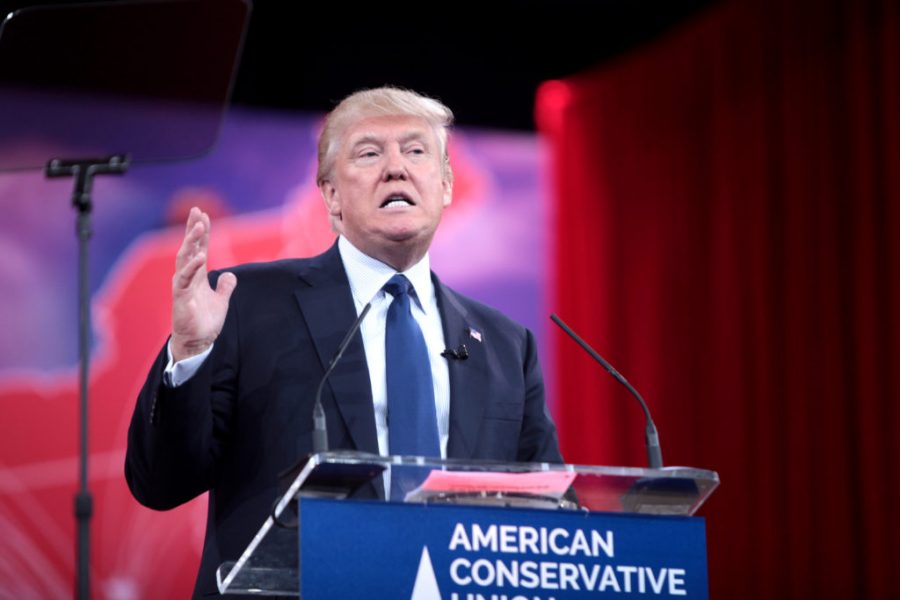Chung: Trump’s Visa Ban Is a Threat to US Schools
July 22, 2020
President Donald Trump recently issued a presidential order to suspend the entry of foreigners to the United States, claiming that they “would be detrimental to the interests of the United States.” He reasoned that the entry of foreign nationals to work in the US “presents a significant threat to employment opportunities for Americans.” However, this order poses a larger threat to schools that demand international workers.
Foreign workers are a critical labor group in the education sector, especially in institutions that provide dual-language immersion programs. They also help fill positions in schools struggling under the weight of the teacher shortage, which is expected to worsen this fall due to the COVID-19 pandemic. Considering these factors, the federal government should exempt the suspension of foreign educators and protect local students’ learning opportunities.
K-12 schools and universities in the US depend on foreign instructors. In Utah, schools recruit over 60 people from China, Brazil, France, Germany, Mexico, Peru and Spain every year to teach in the state’s 200 dual immersion programs. These programs are known to be extremely effective and appreciated by Utah families as they help students “achieve high proficiency in the immersion language,” “develop greater cognitive flexibility,” and prepare to be global citizens.
Sadly, these institutions now face a huge obstacle because of the new presidential order prohibiting employers from recruiting foreign nationals. For schools still working to staff their immersion programs for the fall, the impact of this order is even more devastating, since there are not enough qualified people in the US to fill these positions. Even Utah’s Republican Representative Chris Stewart noted in a press release that foreign teachers not only teach another language but “facilitate an exchange of cultures” that enhances students’ educational experience.
The potential decrease in the number of foreign educators because of this ban is a major threat not only to Utah but to the entire nation, which has been struggling with a teacher shortage. For years teachers have been leaving the profession in large numbers, even as fewer and fewer people have chosen to enter it. Researchers estimate that the size of the shortage was about 110,000 educators two years ago – and this problem will probably become worse as the COVID-19 pandemic threatens teachers’ physical and mental health this fall.
The COVID-19 pandemic has pushed older educators to retire early and use more “personal time,” and removed teachers who are “ill, quarantined, immune-compromised or caring for a loved one at home who is at high risk of infection.” Thus, it has increased the size of the teacher shortage, deepening the urgency for schools that are planning on reopening in fall.
This is not just an issue of filling classrooms with warm bodies, though. Districts want to staff their schools with the most qualified educators. Parents expect certified teachers to educate their children. Students want and deserve a high-quality education. However, according to the Learning Policy Institute’s seminal 2016 report, various institutions are facing serious “difficulty finding qualified teachers for their positions,” and have been for years. In the 2011 to 2012 school year, over 45% of newly hired instructors had less than 2 years of teaching experience. Additionally, from 2011 to 2016, there was an over 8% increase in hiring “not fully certified teachers” — teachers who lack a standard state license or advanced professional certificate. The report also found that over 87,000 uncertified teachers were hired by institutions in 36 states to teach between 2015 and 2017.
Perhaps worse, the rising teacher shortage exacerbates educational inequity. Unequal access to qualified teachers for students in low-income areas and communities of color hurts their learning opportunities, widening the learning gap among students with different social backgrounds and leading to deeper disparities. Trump’s new presidential order will make these problems worse. The process of recruiting qualified teachers to dual-immersion programs and other schools will become more challenging because of the elimination of foreign teachers from the US labor market.
Trump and his administration must realize that this visa ban will eventually deepen educational, economic and societal issues. The administration must exempt the suspension of visas for foreign workers so US schools can once again recruit international educators who can offer dual-language learning, help alleviate the teacher shortage and provide higher quality education to every child in the United States.







